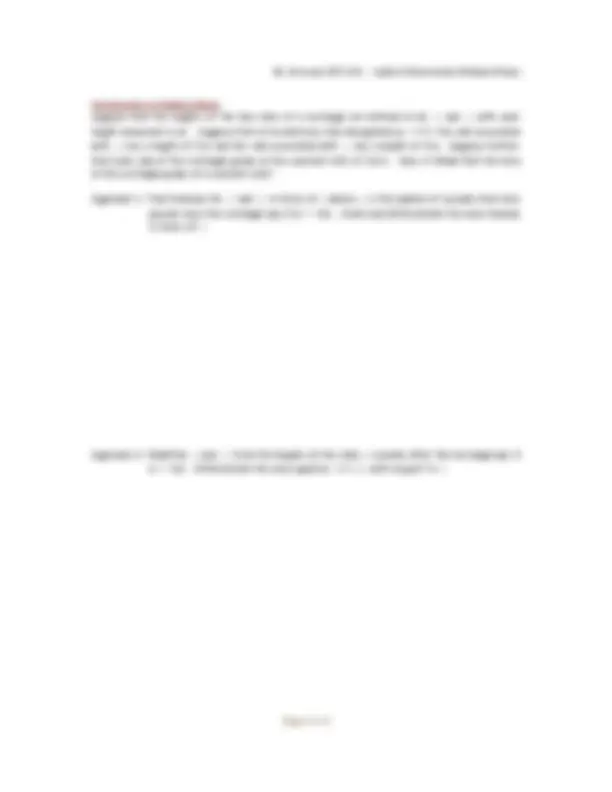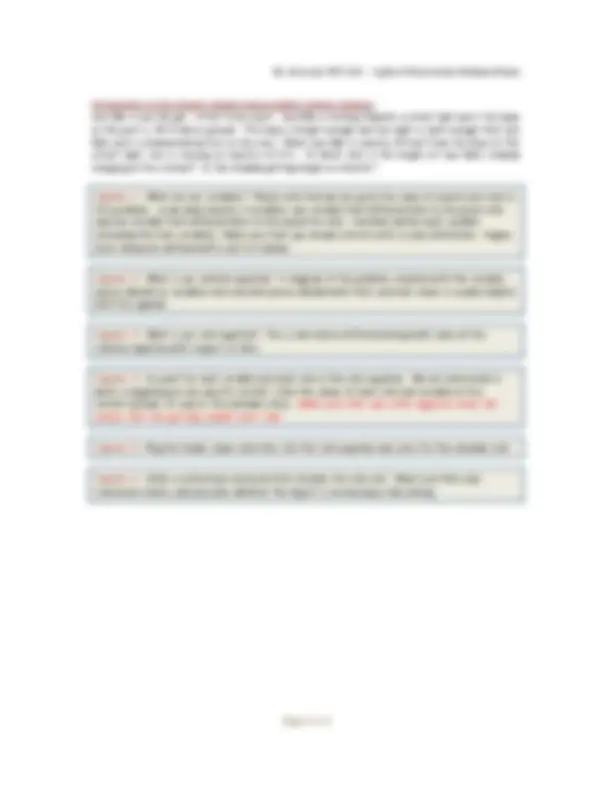








Study with the several resources on Docsity

Earn points by helping other students or get them with a premium plan


Prepare for your exams
Study with the several resources on Docsity

Earn points to download
Earn points by helping other students or get them with a premium plan
Community
Ask the community for help and clear up your study doubts
Discover the best universities in your country according to Docsity users
Free resources
Download our free guides on studying techniques, anxiety management strategies, and thesis advice from Docsity tutors
Material Type: Quiz; Class: Calculus I; Subject: Math; University: Portland Community College; Term: Unknown 1989;
Typology: Quizzes
1 / 10

This page cannot be seen from the preview
Don't miss anything!







Introduction to Implicit Differentiation
Figure 1
Introduction to the classic implicit differentiation strategy
Figure 2
Introduction to Related Rates
that each side of the rectangle grows at the constant rate of 2 m/s. Does it follow that the area of the rectangle grows at a constant rate?
Introduction to the classic related rates problem solving strategy Sue Bob is one tall gal – 6 foot to be exact. Sue Bob is running towards a street light post; the lamp on the post is 40 ft above ground. The lamp is bright enough and the night is dark enough that Sue Bob casts a shadow behind her as she runs. When Sue Bob is exactly 30 feet from the base of the street light, she is running at exactly 10 ft/s. At what rate is the length of Sue Bob’s shadow changing at this instant? Is the shadow getting longer or shorter?
Agenda 1 : What are our variables? Please note that we are given the value of exactly one rate in this problem, so we need exactly 2 variables; one variable that differentiates to the given rate and one variable that differentiates to the asked for rate. Carefully define each variable (including the time variable). Make sure that you include correct units in your definitions. Angles
Agenda 2 : What is our relation equation? A diagram of the problem situation with the variable pieces labeled as variables and constant pieces labeled with their constant values is usually helpful with this agenda.
Agenda 3 : What is our rate equation? This is derived by differentiating both sides of the relation equation with respect to time.
Agenda 4 : Account for each variable and each rate in the rate equation. We are interested in what is happening at one specific instant; state the values of each rate and variable at this
Agenda 5 : Plug the known values and rates into the rate equation and solve for the unknown rate.
Agenda 6 : State a contextual conclusion that includes the rate unit. Make sure that your conclusion clearly communicates whether the object is increasing or decreasing.
At noon one day a truck is 250 miles due east of a car. The truck is travelling west at a constant speed of 25 mph and the car is travelling due north at a constant speed of 50 mph. At what rate is the distance between the two vehicles changing 15 minutes after noon?
Agenda 1 : What are our variables? Please note that we are given the value of exactly two rates in this problem, so we need exactly 3 variables; two variables that differentiate to the given rates and one variable that differentiates to the asked for rate. Carefully define each variable (including the time variable). Make sure that you include correct units in your definitions. Angles
Agenda 2 : What is our relation equation? A diagram of the problem situation with the variable pieces labeled as variables and constant pieces labeled with their constant values is usually helpful with this agenda.
Agenda 3 : What is our rate equation? This is derived by differentiating both sides of the relation equation with respect to time.
Agenda 4 : Account for each variable and each rate in the rate equation. We are interested in what is happening at one specific instant; state the values of each rate and variable at this
Agenda 5 : Plug the known values and rates into the rate equation and solve for the unknown rate.
Agenda 6 : State a contextual conclusion that includes the rate unit. Make sure that your conclusion clearly communicates whether the object is increasing or decreasing.
A tank filled with water is in the shape of an inverted cone 20 feet high with a circular base (on top) whose radius is 5 feet. Water is running out the bottom of the tank at the constant rate of 2 ft^3 /min. How fast is the water level falling when the water is 8 feet deep?